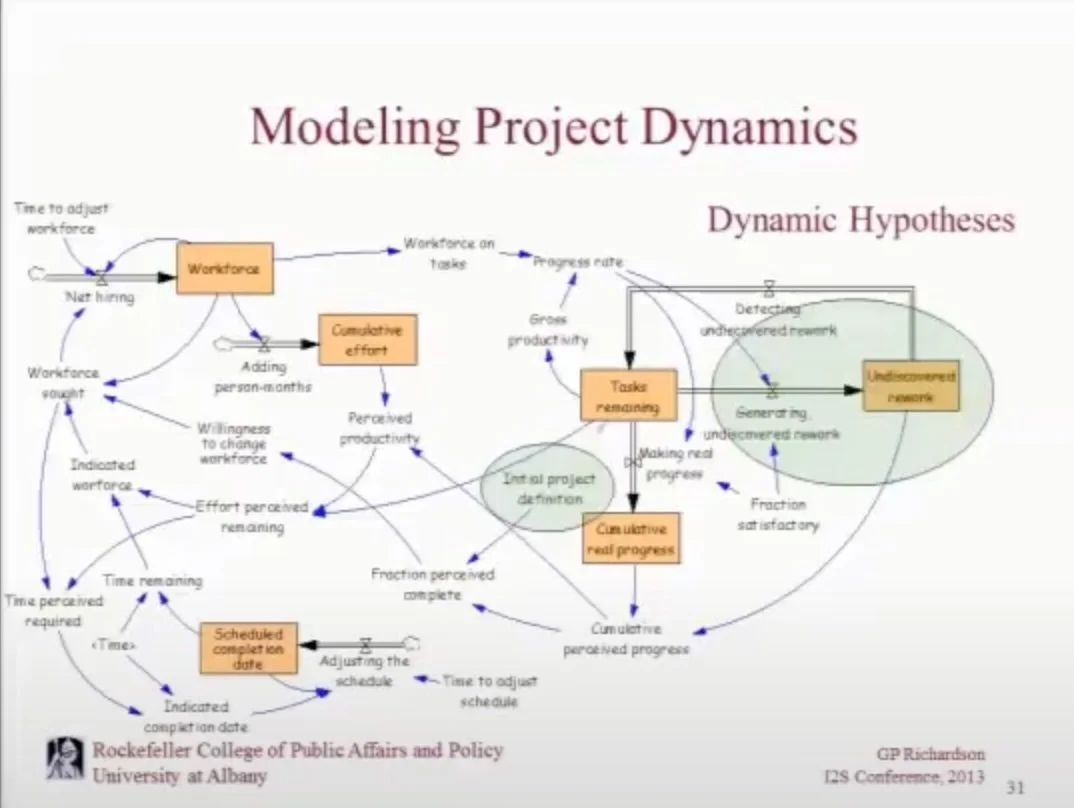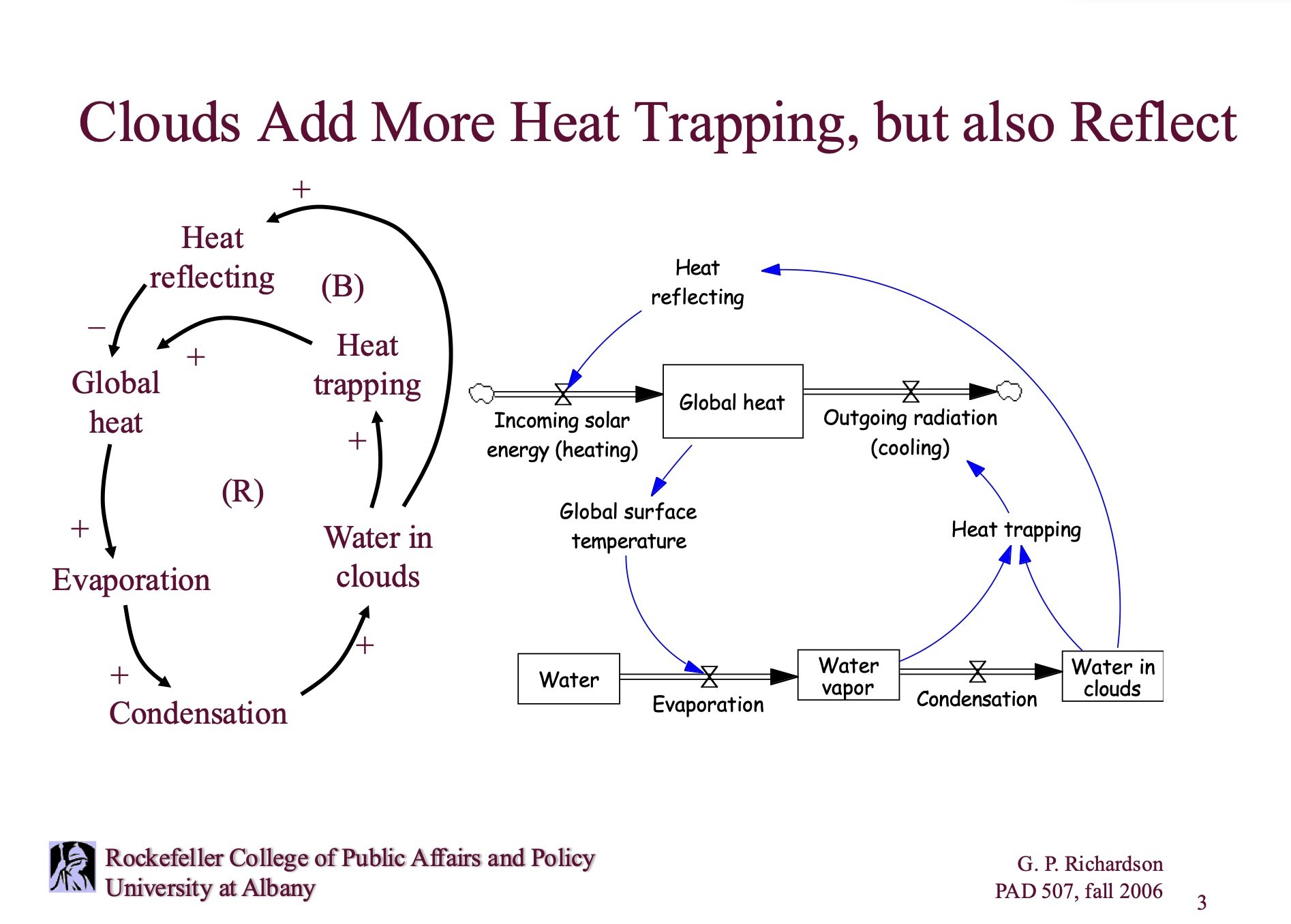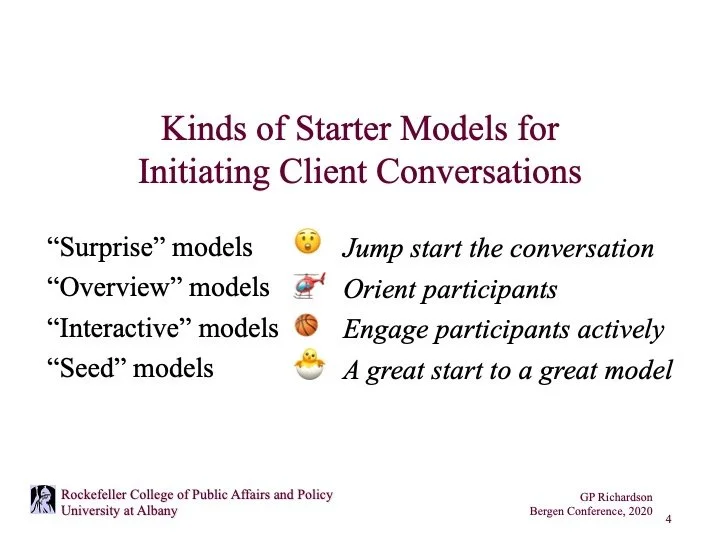Various PPT presentations
The first two presentations are videos of talks from a workshop in Canberra (2012) — an overview of important applications (“models that matter”), followed by an introduction to the field (how we do what we do). Then come four presentations of interest to different audiences: an overview of stocks and feedback loops in climate dynamics (to help address the climate crisis), a description of “starter” models (for group model building workshops), and a scholarly presentation of sliding goals in student achievement (exposing a serious modeling mistake).
-

Models the Matter
A voice and video overview of five impactful model-based system dynamics studies (Canberra 2012)
-

An Introduction to System Dynamics Modeling
A voice and video presentation on creating system dynamics models for serious problems (Canberra 2012)
-

Feedback Loops in Climate Dynamics
An overview of a number of important feedback loops in climate dynamics that aid understanding of the global climate crisis.
-

'Starter Models' for Group Model Building
One way to begin a group modeling project uses a tiny model to orient the participants. This PPT illustrates four different types of starter models.
-

Feedback Thought in Social Science and Systems Theory
Winner of the Forrester Award in 1991, Feedback Thought places system dynamics in its context in intellectual history.
-

Sliding Goals in Student Achievement?
A presentation of a serious study of the decline of the sophistication of texts in pre-college education. The model contains a dramatic, instructive error.